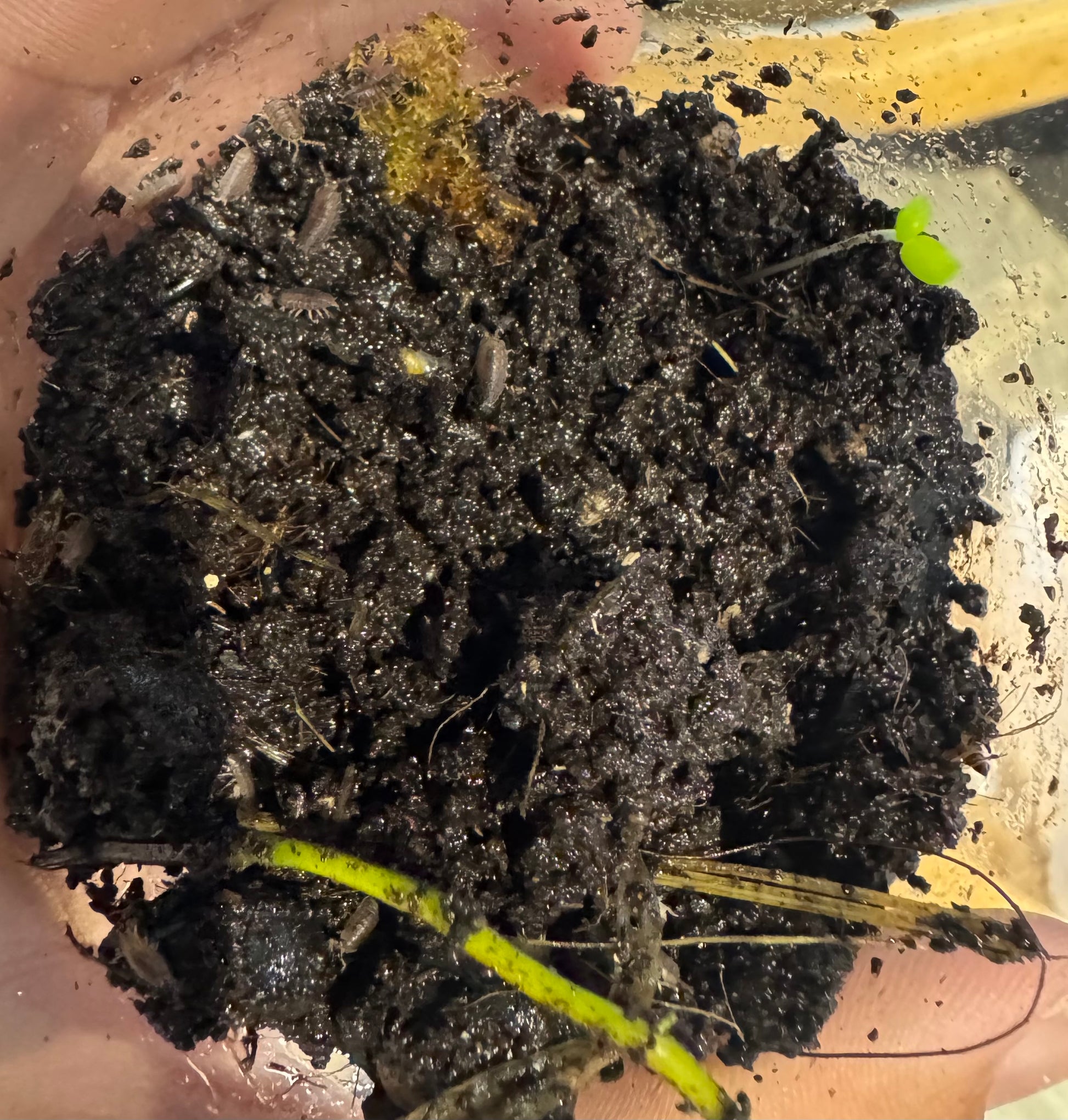GardenAquaria
Isopods Culture
Isopods Culture
Couldn't load pickup availability
Isopods should be housed in a secure terrarium or plastic tub. Some ventilation is required for all species, although care should be taken that ventilation holes are not too large to allow escape. We recommend 15-quart plastic storage bins for most starter cultures. Use a deep, moisture-retaining substrate, such as a mix of flake soil, leaf litter, and unfertilized top soil, and maintain humidity around 70-80% with regular misting. Keep the temperature between 68-77°F (20-25°C). Isopods thrive with a variety of hiding places, such as sanitized bark, decaying wood, or cork bark. We recommend keeping damp sphagnum moss on one side of your enclosure to provide a moist environment at all times.
Isopods are detritivores, meaning they will eat any and all organic matter that is offered to them. Decaying leaf litter is a staple for any isopod diet while also providing hiding places and protection. They do best with a varied diet including blanched vegetables, freeze dried insects, and decaying wood, along with a calcium source such as cuttlebone.
Their Role in a Bioactive Terrarium: Isopods are commonly found in moist environments and play a vital role in bioactive or naturalistic terrariums. Acting as essential members of the clean up crew, they facilitate the decomposition of organic matter such as dead plants and animal waste. This activity is instrumental in maintaining a healthy environment by mitigating waste buildup and averting foul odors. Isopods typically consume resources such as rotting wood, various barks and fecal waste from inhabitants.
Bioactive Vivarium Seeding: Moreover, isopods contribute to bioactive vivarium seeding by dispersing beneficial microorganisms as they traverse the substrate. This process enhances soil enrichment and fosters plant growth, thereby establishing a harmonious ecosystem. Introducing them to the terrarium is a simple process; one can gently place them into the habitat. For guidance on determining the optimal quantity of isopods for habitat seeding, consult our guide on terrarium seeding.
Share


